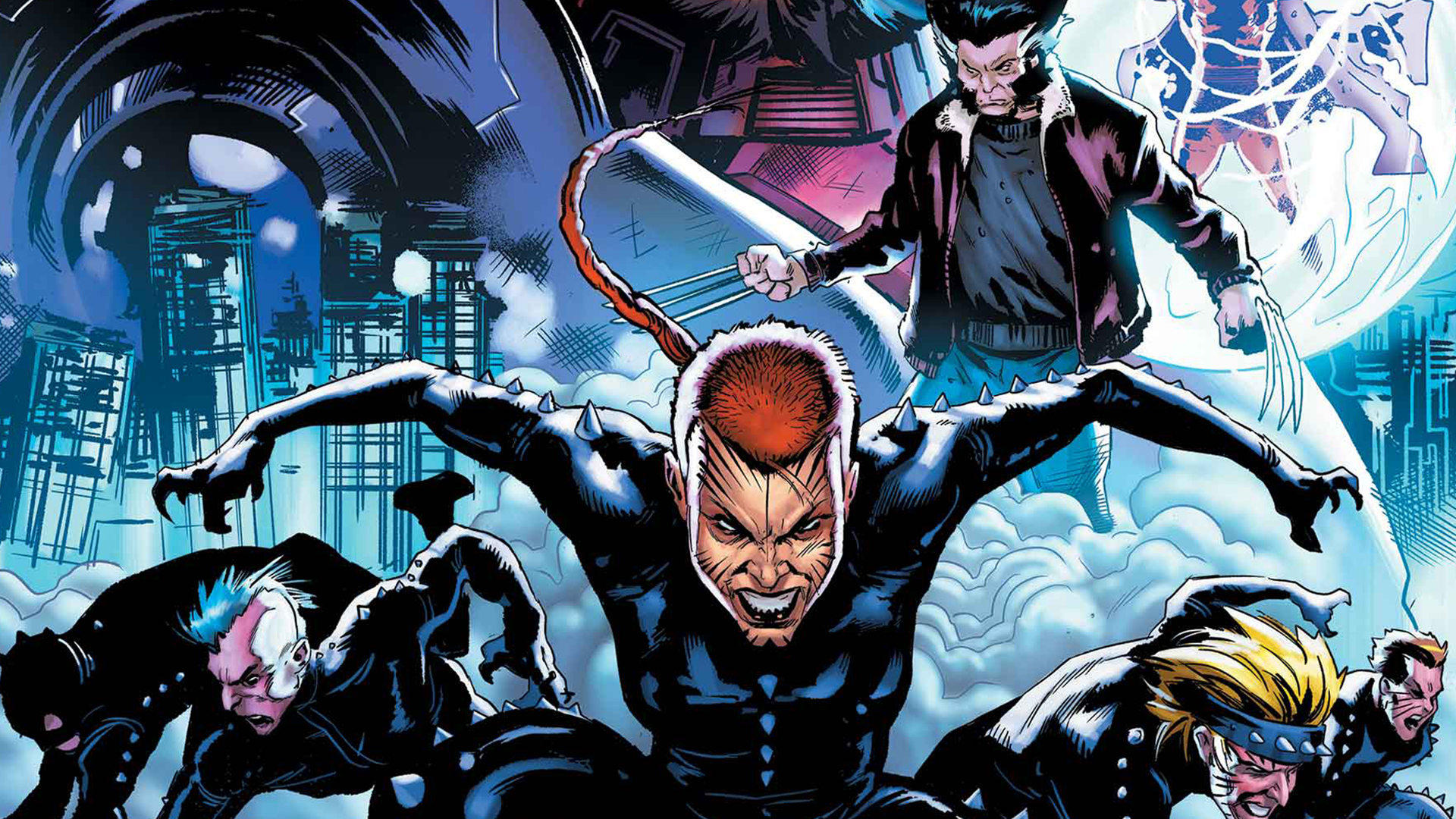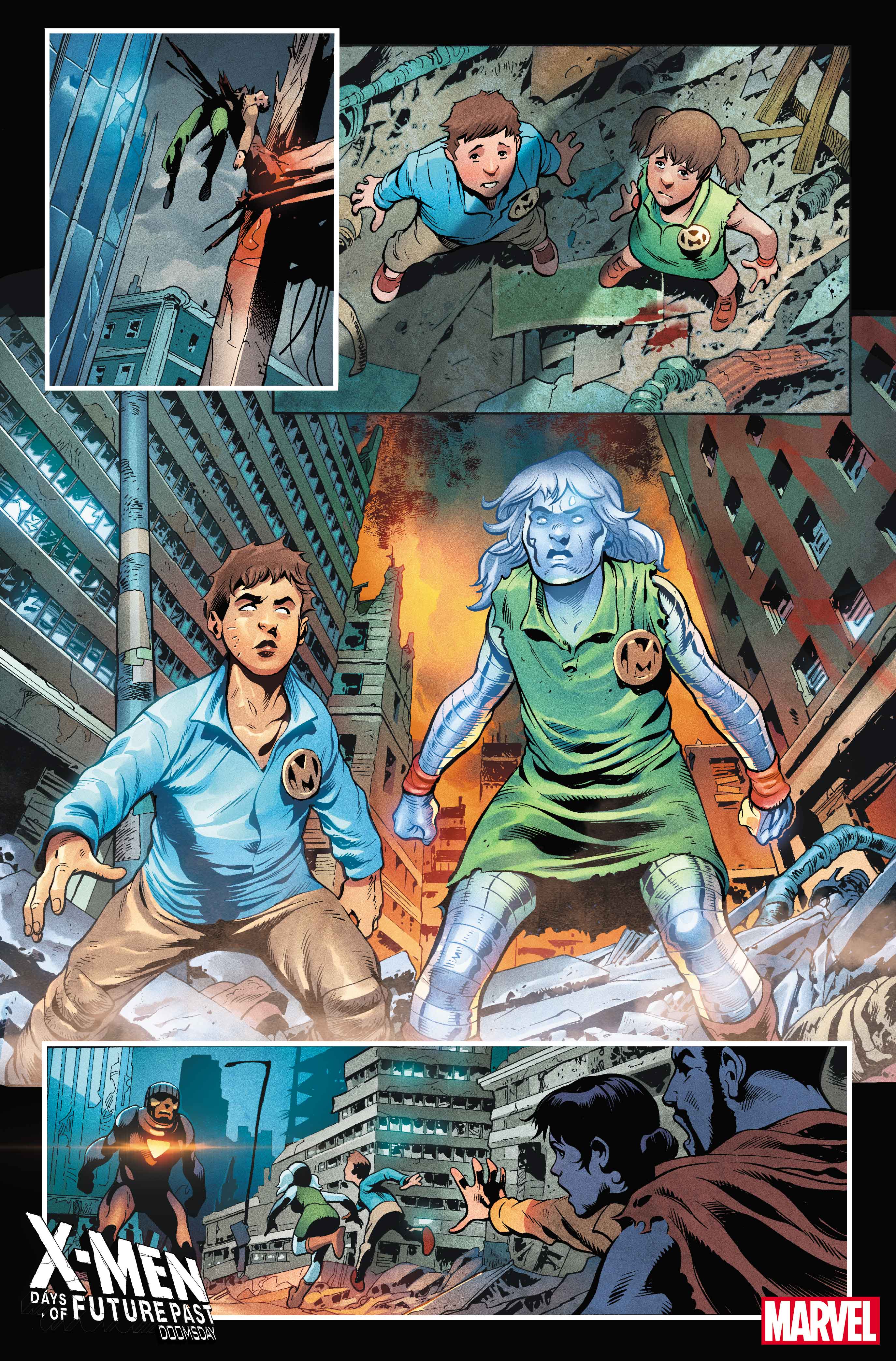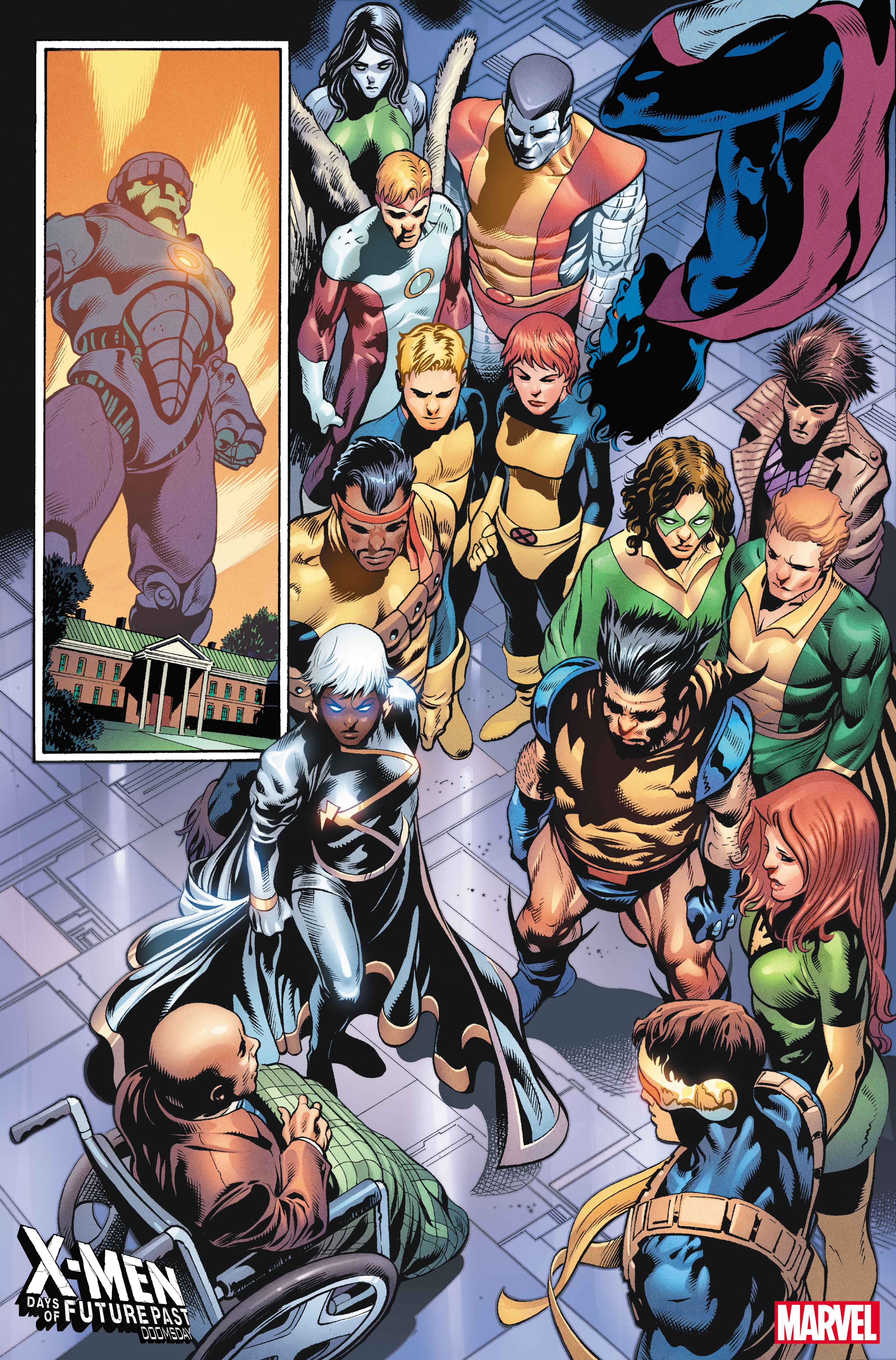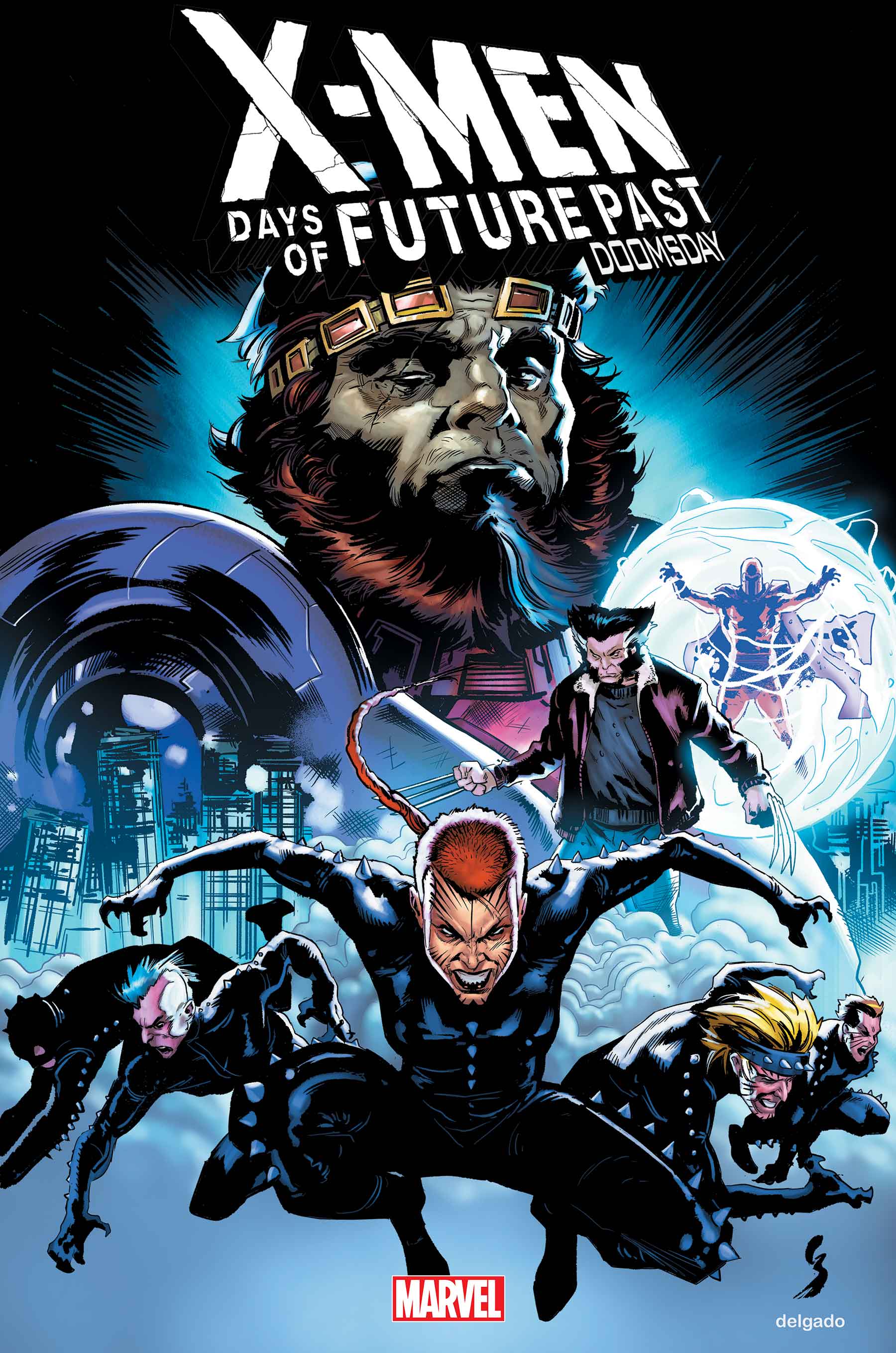Return to the dystopian future world of X-Men: Days of Future Past with the new Doomsday limited series
Writer Marc Guggenheim discusses his and artist Manuel Garcia's upcoming X-Men: Days of Future Past - Doomsday limited series

'Days of Future Past' is one of the best known and best loved X-Men stories of all time. Told across just two issues in 1981's Uncanny X-Men #141 and #142 by writer Chris Claremont and artist John Byrne, the tale of a dark future for mutantkind has become one of the formative building blocks of the X-Men continuity that followed.
Now, decades later, veteran X-Men writer Marc Guggenheim is teaming up with artist Manuel Garcia to fill in some of the gaps between the modern era of the X-Men and the theoretical dystopian future of the classic story with X-Men: Days of Future Past - Doomsday, a limited series set in the time before the events of the original 'Days of Future Past'.
Newsarama spoke to Guggenheim ahead of the July 12 release of X-Men: Days of Future Past - Doomsday #1 to dig into the writer's return to the X-Men, and how he plans to dive into the future world of the classic 'Days of Future Past'. We've also got an early look at some pages from the first issue, as well as the brand new cover for September's X-Men: Days of Future Past - Doomsday #3.
Newsarama: Marc, what's it like coming back to the X-Men after a few years away?
Marc Guggenheim: It’s like coming home. I love these characters so much and thanks to the work of previous X-writers, most notably Chris Claremont (of course), they’re fully realized and dimensional in my mind. They tell me how they would act, what decisions they’ll make, and what they’ll say.
Nrama: What did it take to get back in the groove for Days of Future Past - Doomsday?
Guggenheim: First and foremost, I started with re-reading the original 'Days of Future Past' two-parter in Uncanny X-Men #141 and #142. Even though I’ve read and reread that story multiple times over the years, it’s been a while since I’d taken a look at it and I was blown away by just how much story Chris and John Byrne packed into those two issues. Even the 30 year period which is the subject of this Doomsday series is covered in just four panels (in a seven-panel page).
Get the best comic news, insights, opinions, analysis and more!
But as we know, a lot of continuity and retcons and stories have been added in by Chris and other writers since the original two-parter, so I did a deep dive into all those issues. I tried to weave together a definitive timeline for the events leading up to Uncanny #141 and #142 and the events that followed after.




Nrama: On that note, how has your perspective on the X-Men changed since your run?
Guggenheim: I’d say that even though Doomsday takes place in a completely different timeline, it’s hard to ignore how the Krakoa Era influences everyone’s perspective of the X-Men. I mean, these days, the X-Men have their own country, their own planet - they’re in the driver’s seat.
But the events of Doomsday involve a polar opposite situation where, instead of being on top of the world, mutants are at the bottom of the heap. I think readers will be intrigued by an X-Men story where the X-Men are in such a different position than the one they occupy in current continuity. While this book is geared to all X-Men fans, especially longtime and classic fans, I also approached Doomsday with present day readers in mind. They shouldn’t have to be familiar with the original 'Days of Future Past' to enjoy Doomsday.
Nrama: 'Days of Future Past' is about as legendary an X-Men story as it gets. How did you decide which aspects of the story to expand upon for Doomsday?
Guggenheim: I’ll tell you: It wasn’t easy. Even though, like I said, the original 30-year run-up to the events of Days of Future Past were summarized in four panels in Uncanny #141, Chris and other writers like Alan Davis and John Francis Moore have come in and filled in certain details. I wanted to make sure that those stories were represented.
For example, longtime readers know that Rachel was turned into a mutant-hunting hound by Ahab, but is eventually a non-Hound imprisoned in the mutant internment center when we first "meet" her in Uncanny #141. What motivated those turns and how did they take place? So there are questions like that which are drawn from established continuity.
But there were also questions I just had as a reader which I wanted to see answered. For example, why are mutants hated and feared but super heroes apparently lauded? At the same time, Uncanny #141 tells us that heroes like Spider-Man and the Thing were killed during the Sentinels' rise to power. How did those events unfold?
At the end of the day, I could have written a series four times as long as Doomsday and still not covered all aspects of this time period. It’s just that rich.

Nrama: How has it been working with artist Manuel García? What makes him the perfect artist for this story?
Guggenheim: I love Manuel's work. It’s just so beautifully fluid and dynamic. His style reminds me of X-artists like Neal Adams, Carlos Pacheco, and Alan Davis. But the thing I like most about him is how forgiving he is of me.
Four issues isn’t much time to tell a story that spans 30 years, so every single page is pretty dense. Just the other day, Manuel was — very fairly — asking, "Aren’t there any easy pages in this story?" And there aren't. But Manuel makes it all work — and he makes it look easy.
Nrama: What do you want fans to know about Days Future Past - Doomsday going in?
Guggenheim: Ideally, they don’t need to know anything going in. If I’ve done my job right, you don’t need to be familiar with the original 'Days of Future Past' in order to enjoy Doomsday.
Rather, we’re telling a story about the rise of fascism and the heroes who risk everything to rebel against it. It just so happens that the fascists are robots (and some humans) and the heroes are drawn from the Marvel canon.
There’s a reason why this story has resonated for over 30 years and why we keep returning to it. I hope we do Chris and John’s original vision justice.
The original 'Days of Future Past' is one of the best X-Men stories of all time.
I've been Newsarama's resident Marvel Comics expert and general comic book historian since 2011. I've also been the on-site reporter at most major comic conventions such as Comic-Con International: San Diego, New York Comic Con, and C2E2. Outside of comic journalism, I am the artist of many weird pictures, and the guitarist of many heavy riffs. (They/Them)



